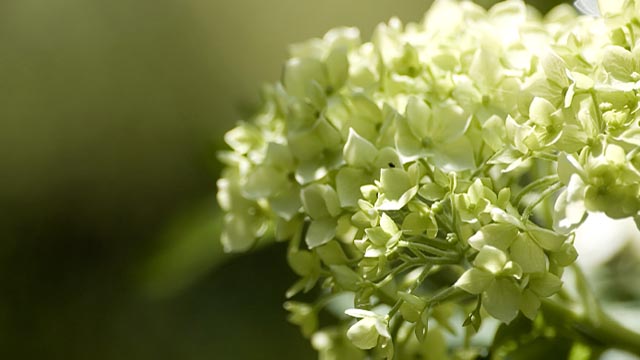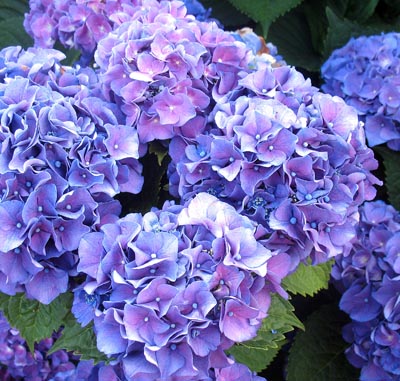Choosing hydrangeas to plant
Alan Titchmarsh on his fondness for hydrangeas


Many of the plants in my garden have associations-either they bring back memories of childhood or else of particular places-and so it is with hydrangeas. When our children were small, the summer bank holiday was always spent in a house by the sea in Sussex. It wasn't a smart dwelling, but suited our bucket-and-spade late-summer holiday down to the ground.
Every year, one thing raised my spirits as much as the prospect of rockpooling and sandcastle-building: a bank of hydrangeas that grew nearby. The mounds of pink and white against the walls of our neighbour seemed, to my eye, wonderfully opulent. I also remember seeing great banks of them in the ravine garden at Trebah in Cornwall, where rich-blue domes jostle among the pink and white-the soil there being acid as opposed to the alkaline earth in West Sussex, where pink and white are the norm. My love affair with hydrangeas continues and, now that I preside over a coastal garden on the Isle of Wight, I am determined to add to my hitherto limited collection.
I do grow one hydrangea in my Hampshire country garden and that's Annabelle. She's more delicate than the large, mop-headed types found in the ‘holiday garden' and at Trebah, but I treasure Annabelle's finer qualities and love that summer moment-rapidly approaching-when her soft-green foliage, so different from the rubbery texture of the mopheads, almost disappears under a welter of creamy-white florets that turn lime green with age.
But Annabelle needs support, as her flowers are so heavy that they cause the stems to fall sideways and open up the centre of the bush, sometimes even breaking under the strain. For several years, I used circular, plastic-coated wire supports of the kind made for peonies and other border perennials, but they soon became inadequate as the hydrangea grew.
I cast around for a replacement and lighted upon some large iron coronets made by Garry Szafranski at Artisan Plant Supports in Staffordshire (01538 753128; www.artisanplantsupports.co.uk). He makes a range, but the ones that are shaped like a 4ft-tall crown, with outward-leaning uprights, were exactly what I needed. Now, Annabelle has a corset worthy of her regal stature and any part of the support that shows is decorative in itself-the rusted metal contrasting well with the vivid-green leaves. What's more, the supports can be left in position all year round.

On the Isle of Wight, I already have plans to introduce more of the mop-headed hydrangeas that don't relish my Hampshire earth. Conversely, the island soil on my part of the north coast is heavy clay-just the kind of conditions that such succulent-leaved shrubs need to provide them with moisture throughout the year.
Digging holes in such unyielding earth is an endurance test, but, once plants have got their roots down, they seem to thrive and I'm beginning to feel the benefit of planting a new garden; I've taken my belt in one notch already.
Exquisite houses, the beauty of Nature, and how to get the most from your life, straight to your inbox.
Coastal gardening offers a reminder that it's always a good idea to work with your conditions rather than against them, to observe the plants that do well in neighboring gardens and to use them as the basis of a collection that can be added to.
The other thing I remember about those holidays is that there was always one day when, overnight, thanks to a powerful onshore breeze, the bedding plants in the garden next door seemed to have been attacked with a blow-torch; something to be borne in mind. But late summer is, as yet, a fair way off and, in the meantime, I shall enjoy watching the flower-heads on my newly planted hydrangeas fatten and colour up.
* Follow Country Life magazine on Twitter
Country Life is unlike any other magazine: the only glossy weekly on the newsstand and the only magazine that has been guest-edited by His Majesty The King not once, but twice. It is a celebration of modern rural life and all its diverse joys and pleasures — that was first published in Queen Victoria's Diamond Jubilee year. Our eclectic mixture of witty and informative content — from the most up-to-date property news and commentary and a coveted glimpse inside some of the UK's best houses and gardens, to gardening, the arts and interior design, written by experts in their field — still cannot be found in print or online, anywhere else.
